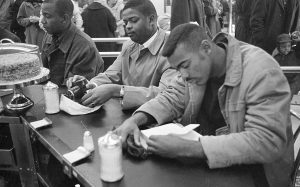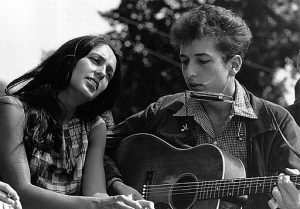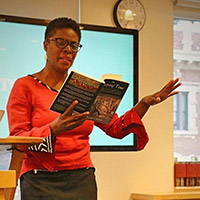This week was a week of pain and tears. To watch a fellow human being crushed to death in real time as bystanders begged for his life is a pain that no words can truly describe…. but still, I have hope.
As some of you know, I write about slavery and its legacy, but I also teach a class on the Civil Rights movement. In fact, I just taught that class this spring to an amazing group of young people who, like many of you that I have heard from lately, wanted to know more about the movement of the 50’s and the 60’s, and most of all, want to make a difference now.
Here in a nutshell is some of what they learned and taught each other and here is what YOU can do:
I. Strategies of the Civil Rights movement
- Boycotts
The famous Montgomery Bus Boycott which followed Rosa Parks and before that lesser known Claudette Colvin’s direct action of refusing to sit at the back of the bus. Enter Rev. Dr. Martin Luther King Jr. who led a movement in which Black citizens for over a year walked, took taxis, and carpooled until the 1956 ruling that declared segregated buses illegal.
- Sit-ins
The 1960 Sit in movement included protests of the “whites only” lunch counters at Woolworths in Greensboro and Nashville, among other cities: nonviolent protesters occupied seats at the counters and refused to leave. Many of these activists were trained in nonviolent techniques such as those taught at the Highlander Folk School which meant that they had to maintain control and not react to being spat on, insulted or physically manhandled.
- Freedom Rides
The 1961 Freedom Rides were nothing short of groundbreaking. A multiracial group of young people prepared to test the civil rights laws by traveling by Greyhound bus from North to South. They even wrote their wills beforehand in case they did not make it back. They did but many were beaten and bruised along the way by mobs of white supremacists and the KKK.
- Teach- ins and Read-ins
Many a campus had regular teach- ins regarding various aspects of the movements. Guests would be invited to speak from out of town or campus student leaders would address key issues. See booklist in resources below. Others had reading groups to inform themselves of the issues before taking positive actions. Start a reading group on the issue of Slavery and Reparations and learn more about the roots of the current crisis. It is not your fault that you weren’t taught this in school, but the current moment is a good time for us all to learn more.
- Voter registration drives
Activists like Fanny Lou Hamer developed registration drives to help Blacks overcome the then legal barriers to voting in various parts of the country. Continued advocacy for the restoration of key provisions of the Voting Rights Act that were rolled back in 2013 is desperately needed. Today, these efforts are still vitally important. https://www.usa.gov/voter-registration
- Citizenship Education classes
Unsung female activists Septima Clarke and Dorothy Cotton come to mind when we think of their tireless efforts to educate people on their rights as citizens. This crisis has shown how important this is for ALL citizens.
- Letter campaigns
Participants in Mississippi Freedom Summer, among other things, wrote letters and recorded their activities. Use your voice and write to government officials and others regarding justice for George Floyd. (see below) Letter campaigns work because officials do take note of the number of emails and calls that they receive. Pick up the phone and call and express your views.
- Media campaigns/photography
Civil rights leaders famously used photographs as a way to drum up interest in their cause. Professional photographers and photojournalists like Gordon Parks not only helped document the movement but were important organizers.
- Write and perform in solidarity
Writers like James Baldwin wrote many essays at the height of the movement and was often called upon to speak. At the 1963 March on Washington, singers Bob Dylan and Joan Baez shared the platform with Mahalia Jackson and Martin Luther King Jr. when he gave his famous “I have a dream” speech. See Mahalia sing two hymns here.
- Donate or Raise monies
Effective movements require support. Not everyone is cut out for marches or direct action, but many can give according to their means to support those who are sincerely working for positive change. Many individuals and organizations did so during the movement. Even King himself donated proceeds from his 1964 Nobel Peace Prize to civil rights organizations. Do your research and support those who are working for a better society for us all including those working on criminal justice reform and mass incarceration.
- Hold a Vigil or Memorial
Hold a social distance or zoom video meeting in honor of George Floyd or Breonna Taylor who was killed in Louisville, Kentucky in March…even it is just in your building. By continuing to say their names, you make it that much harder for the world to forget (and most importantly to repeat such egregious actions.) Prayer and fasting were also integral parts of the movement as many meetings took place in churches. That said, people of all faiths including the Jewish faith made a contribution as did those unaffiliated with religious institutions.
- Marches
I left this one for last because it is not the ONLY way to protest, and frankly, now in the COVID era, it may not be the most sustainable; not to mention that all kinds of “other” actors might be trying to dilute your peaceful message. That said, marches were used effectively during the 50’s and 60’s most notably the March on Washington in 1963 and the Selma marches, beautifully captured in the film Selma, resulted in the Voting Rights Act of 1965. There are many types of marches but this one struck me as original: Consider a solidarity march like the one recorded in Camden NJ this week where police officers (trained in community policing for years) marched ALONGSIDE Black Lives Matter activists peacefully and without incident. There are other officers out there like this Tennessee Police chief who are calling for change.
I could go and on and some of these strategies can be updated to fit the times, but perhaps the most important thing to remember is what was behind King’s carefully developed NON-VIOLENT philosophy, a philosophy influenced by that man of peace, Mahatma Gandhi:
II. BEHIND KING’S NONVIOLENT PHILOSOPHY
See here from The King Center’s website:
SIX PRINCIPLES OF NONVIOLENCE described in his first book, Stride Toward Freedom.
- PRINCIPLE ONE: Nonviolence is a way of life for courageous people.
- PRINCIPLE TWO: Nonviolence seeks to win friendship and understanding.
- PRINCIPLE THREE: Nonviolence seeks to defeat injustice not people.
- PRINCIPLE FOUR: Nonviolence holds that suffering can educate and transform.
- PRINCIPLE FIVE: Nonviolence chooses love instead of hate.
- PRINCIPLE SIX: Nonviolence believes that the universe is on the side of justice. The nonviolent resister has deep faith that justice will eventually win. Nonviolence believes that God is a God of justice.
That said, we say we like these things now and everyone is calling for more Dr. Kings, but he was by no means a popular figure then. He was considered very radical and the non-violence of civil rights activists WAS met by violence. Violence was very much a part of the picture and yet it clearly should not be on either side.
III. Final THOUGHT: REPARATIONS
How about THE GEORGE FLOYD REPARATIONS FUND: A MARSHALL PLAN FOR BLACK AND BROWN COMMUNITIES IN THE UNITED STATES?
Powers that be,
You have resisted doing this for 155 years! Would this not be better than what is going on now? You don’t need any more Task forces or Congressional Hearings. You don’t need any more books from people like me and other scholars and writers. Do it because it is right. Do it because these communities need it. Do it because you need it because as King said, “we are tied together in an inescapable network of mutuality, tied in a single garment of destiny.”
And if the Floyd case shows us anything, it proves that what Booker T. Washington said was also true: to keep a man down, you have stay down with him. In addition to the absolute horror of watching Floyd die, isn’t that what we saw on that video?
Tell me, was ex-officer Derek Chauvin standing tall—as a man and an officer? Absolutely NOT.
Yes, reparations– just do it. It’s time. It’s time for healing. It’s time reconciliation AND it’s time for reparations.
It might just be the thing to calm everybody down.
Anne C. Bailey, author of The Weeping Time: Memory and the Largest Slave Auction in American History. (Cambridge University Press, 2017)
Woolworth sit in Durham NC, Public Domain
MLK photo, Public Domain, National Arhives
Fannie Lou Hamer photo, PUblic Domain and By Warren K. Leffler, U.S. News & World Report Magazine; Restored by Adam Cuerden.
THE LETTER CAMPAIGN YOU CAN START RIGHT NOW FOR GEORGE FLOYD:
MINNESOTA
- Hennepin County District Attorney: Michael Orville Freeman (612-348-5550)
Address:C-2000 Government Center
300 South Sixth Street
Minneapolis, MN 55487
Email: citizeninfo@hennepin.us
- Governor: Tim Walz (651-201-3400)
Address: 130 State Capitol
75 Rev Dr. Martin Luther King Jr. Blvd.
St. Paul, MN 55155
- Mayor: Jacob Frey (612-673-2100)
Address: 350 South 5th Street, Room 331
Minneapolis, MN 55415
612-673-2100
Link to send a message: https://jacobfrey.org/contact
- Minnesota Attorney General: Keith Ellison (800-657-3787)
Address: 445 Minnesota Street, Suite 1400
St. Paul, MN 55101-2131
- Online Petitions
- https://www.change.org/p/mayor-jacob-frey-justice-for-george-floyd?use_react=false
- https://act.colorofchange.org/sign/justiceforfloyd_george_floyd_minneapolisor,
Text “FLOYD” to 55156 and sign the Color of Change petition.
OTHER RESOURCES
For more on reparations see https://annecbailey.net/reparations-101-everything-you-wanted-to-know-but-were-afraid-to-ask/
https://annecbailey.net/reparations-101-harriet-tubman-and-the-reparations-debate/
For more on WHAT NONVIOLENCE ACCOMPLISHED, see https://annecbailey.net/what-non-violence-accomplished/
http://annecbailey.blogspot.com/2017/08/heather-heyer-and-power-of-one-voice.html
Teaching Tolerance Curriculum https://www.tolerance.org/sites/default/files/kits/A_Time_for_Justice_Teachers_Guide.pdf
The 1619 Project of The New York Times Magazine, https://www.nytimes.com/interactive/2019/08/14/magazine/1619-america-slavery.html
Book list link: https://annecbailey.net/slavery-was-not-choice-but-listening-to/
Also see #twitterstorians and @womnknowhistory—anyone on there is an amazing resource.
And be aware of possible forces of disruption:https://www.buzzfeednews.com/article/clarissajanlim/protesters-violence-george-floyd?fbclid=IwAR1cSMUsQCaPtcD9hPLfHbvCV8Fe4bxUrlXUAcjhVhDwE3dErh0G9aH7LVc
https://upload.wikimedia.org/wikipedia/commons/c/c7/Joan_Baez_and_Bob_Dylan.jpg
Public Domain; Author Rowland Scherman, National Archives







 Find Anne C. Bailey's non-fiction book :
Find Anne C. Bailey's non-fiction book : 




Well done, Anne!
Your specification of things to do in this time of racist crisis hits all nails squarely on the head.
I hope you receive widespread positive responses.
Keep us informed.
Best,
Steve
Professor Emeritus, Binghamton University
I will absolutely keep you informed Stephen. Thanks for the support.